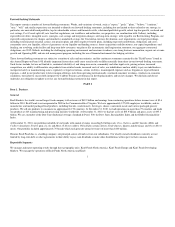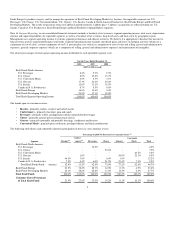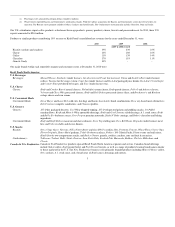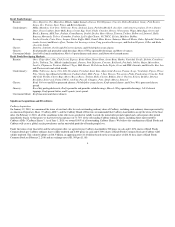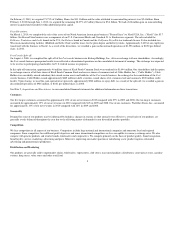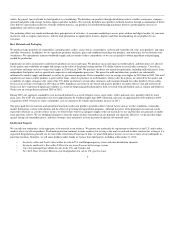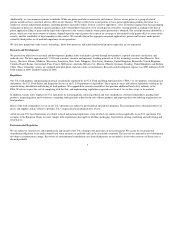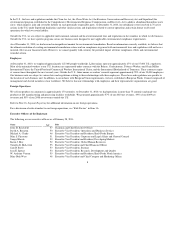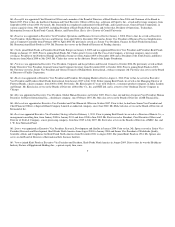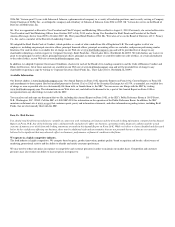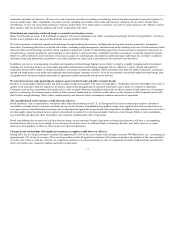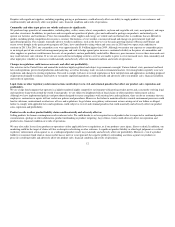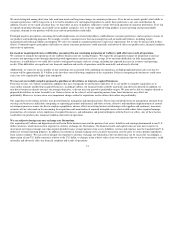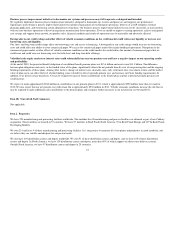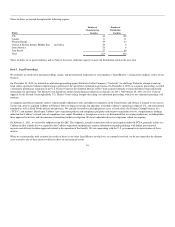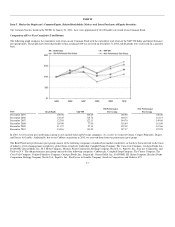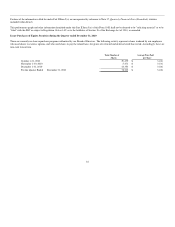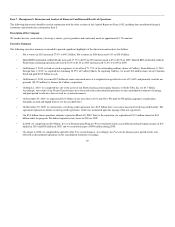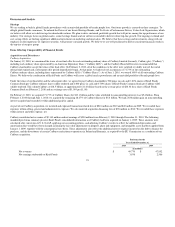Kraft 2010 Annual Report Download - page 14
Download and view the complete annual report
Please find page 14 of the 2010 Kraft annual report below. You can navigate through the pages in the report by either clicking on the pages listed below, or by using the keyword search tool below to find specific information within the annual report.
commodity and other cost increases. We may also need to increase or reallocate spending on marketing, advertising and new product innovation to protect or
increase market share. These expenditures are subject to risks, including uncertainties about trade and consumer acceptance of our efforts. Despite these
expenditures, we may not successfully maintain or enhance market share. If we reduce prices or increase costs, but we cannot increase sales volumes to offset
those changes, then our financial condition and results of operations will suffer.
Maintaining our reputation and brand image is essential to our business success.
Many of our brands are iconic, with worldwide recognition. Our success depends on our ability to maintain brand image for our existing products, extend our
brands to new platforms and expand our brand image with new product offerings.
We seek to maintain, extend and expand our brand image through marketing investments, including advertising and consumer promotions, and product
innovation. Continuing global focus on health and wellness, including weight management, and increasing media attention to the role of food marketing could
adversely affect our brand image or lead to stricter regulations and greater scrutiny of food marketing practices. Increased legal or regulatory restrictions on
our advertising, consumer promotions and marketing, or our response to such restrictions, could limit our efforts to maintain, extend and expand our brands.
Moreover, adverse publicity about regulatory or legal action against us could damage our reputation and brand image, undermine our customers' confidence
and reduce long-term demand for our products, even if the regulatory or legal action is unfounded or not material to our operations.
In addition, our success in maintaining, extending and expanding our brand image depends on our ability to adapt to a rapidly changing media environment,
including our increasing reliance on social media and online dissemination of advertising campaigns. We are subject to a variety of legal and regulatory
restrictions on how and to whom we market our products, for instance marketing to children. These restrictions may limit our ability to maintain, extend and
expand our brand image as the media and communications environment continues to evolve. If we do not maintain, extend and expand our brand image, then
our product sales, financial condition and results of operations could be materially and adversely affected.
We must leverage our value proposition to compete against retailer brands and other economy brands.
Retailers are increasingly offering retailer and other economy brands that compete with some of our products. Our products must provide higher value and / or
quality to our consumers than less expensive alternatives, particularly during periods of economic uncertainty such as those we continue to experience.
Consumers may not buy our products if the difference in value or quality between our products and retailer or other economy brands narrows or if consumers
perceive a narrowing. If consumers prefer retailer or other economy brands then we could lose market share or sales volumes or shift our product mix could
shift to lower margin offerings. These effects could materially and adversely affect our financial condition and results of operations.
The consolidation of retail customers could adversely affect us.
Retail customers, such as supermarkets, warehouse clubs and food distributors in the U.S., the European Union and our other major markets, continue to
consolidate, resulting in fewer customers on which we can rely for business. Consolidation also produces large, more sophisticated retail customers that can
resist price increases and demand lower pricing, increased promotional programs or specifically tailored products. In addition, larger retailers have the scale to
develop supply chains that permit them to operate with reduced inventories or to develop and market their own retailer brands. Further retail consolidation
may materially and adversely affect our product sales, financial condition and results of operations.
Retail consolidation also increases the risk that adverse changes in our customers' business operations or financial performance will have a corresponding
material adverse effect on us. For example, if our customers do not have access to sufficient funds or financing, then they may delay, decrease or cancel
purchases of our products, or delay or refuse to pay us for previous purchases.
Changes in our relationships with significant customers or suppliers could adversely affect us.
During 2010, our five largest customers accounted for approximately 26% of our net revenues with our largest customer Wal-Mart Stores, Inc., accounting for
approximately 14% of our net revenues. There can be no assurance that all significant customers will continue to purchase our products in the same quantities
or on the same terms as in the past. The loss of a significant customer or a material reduction in sales to a significant customer could materially and adversely
affect our product sales, financial condition and results of operations.
11


